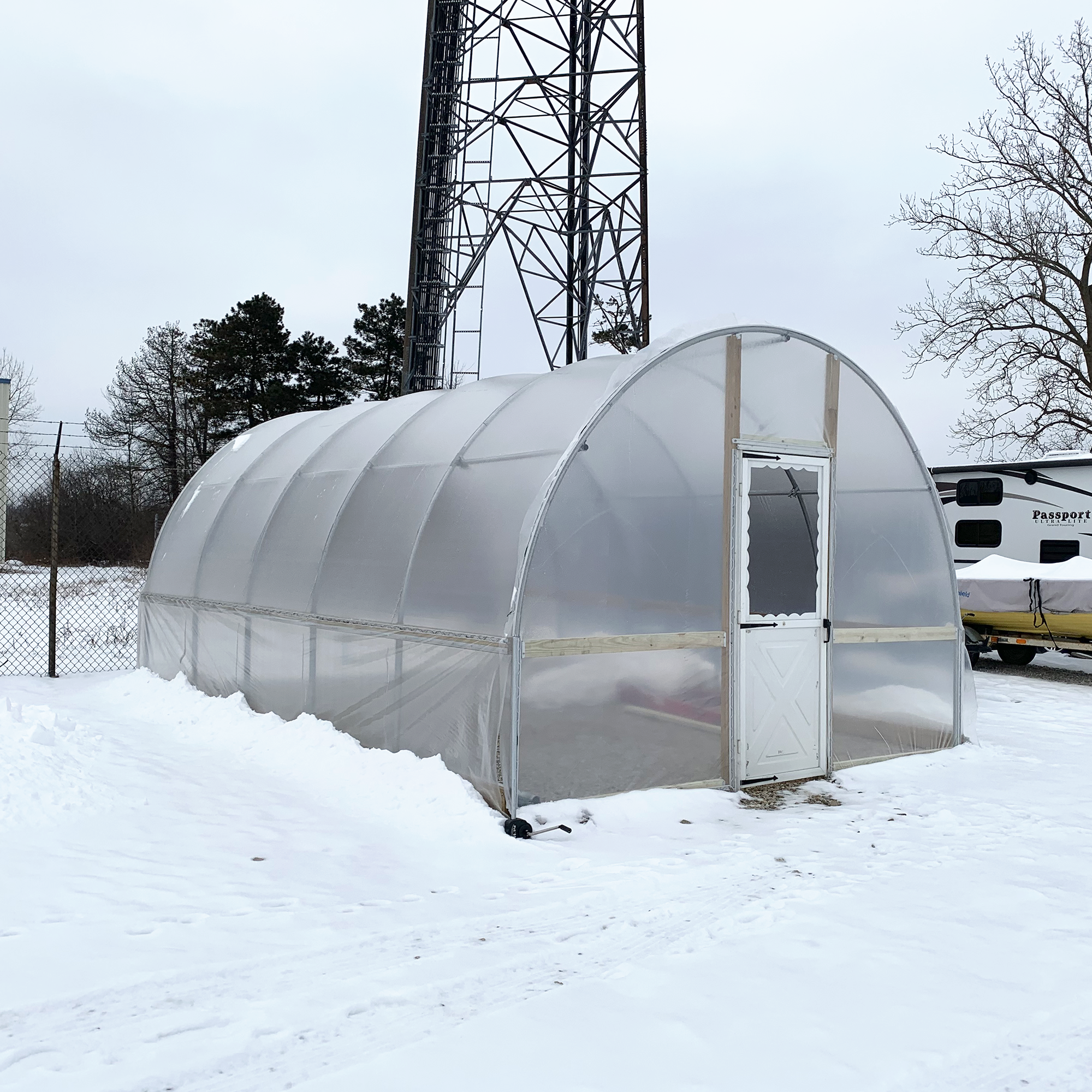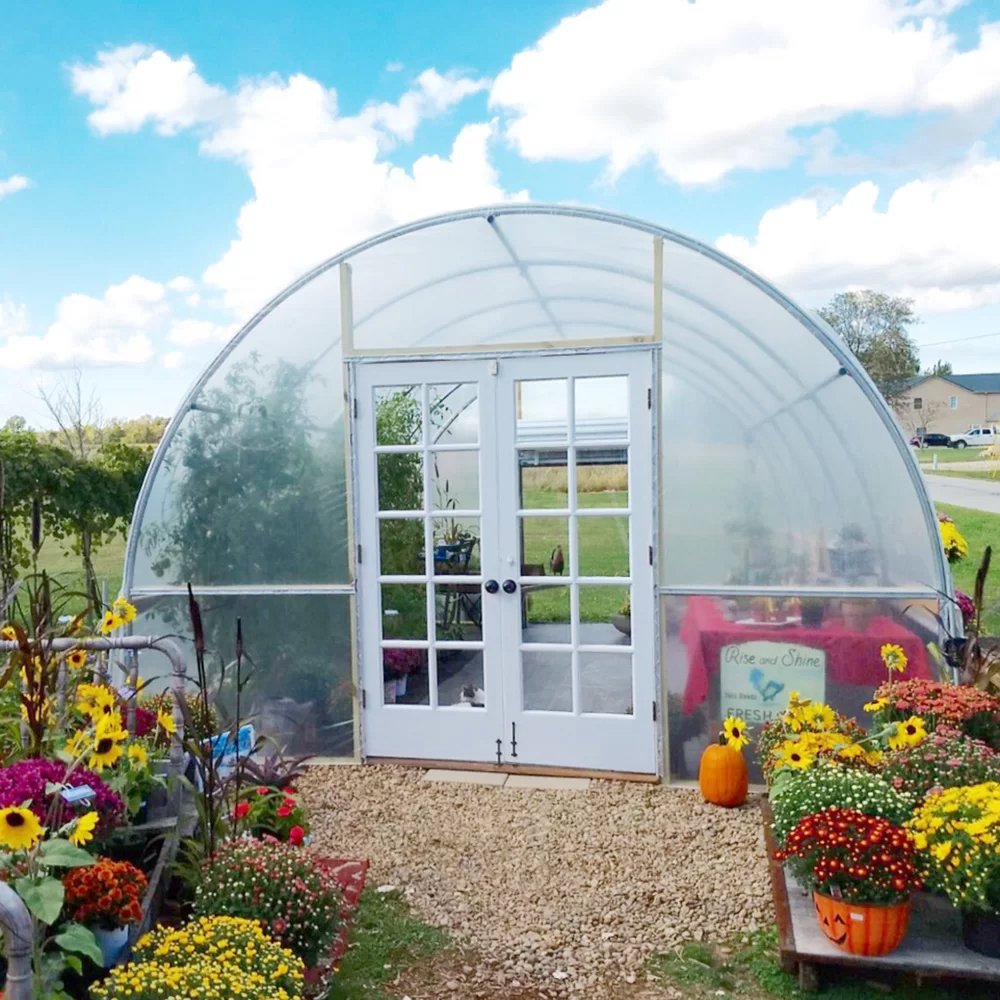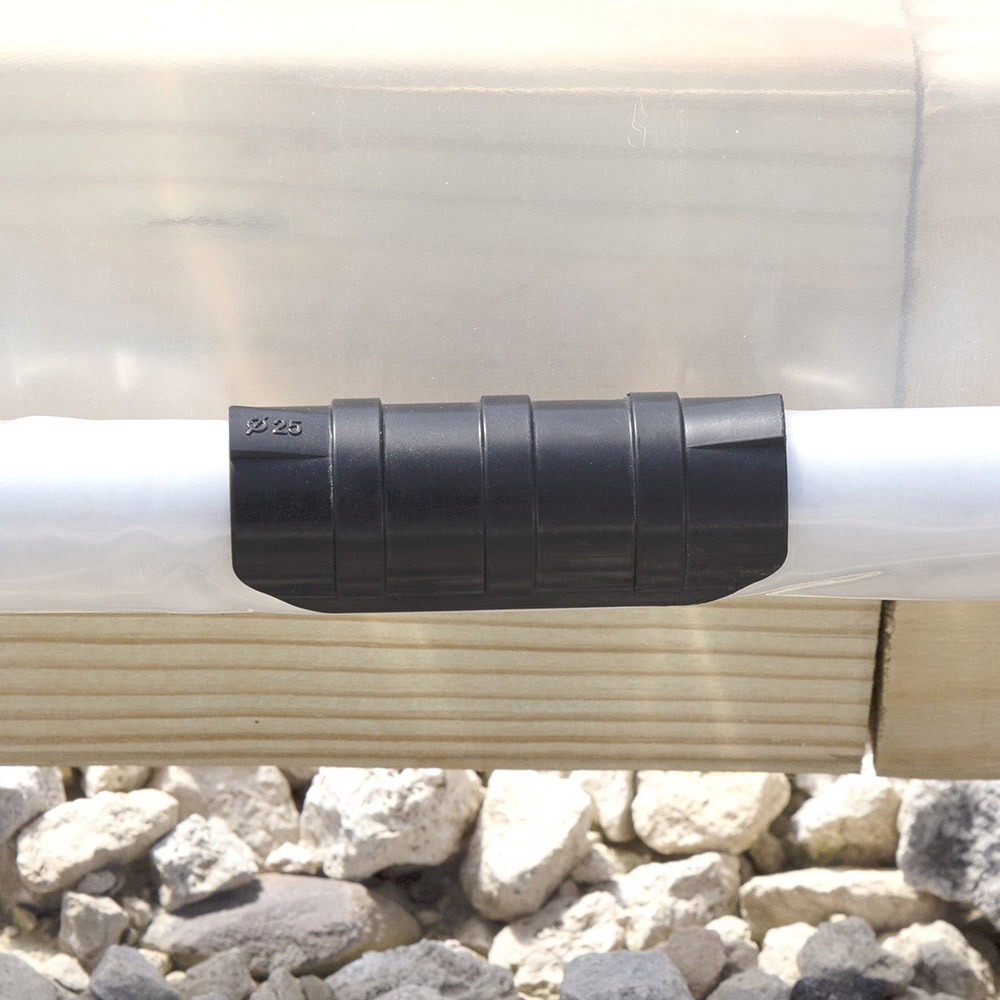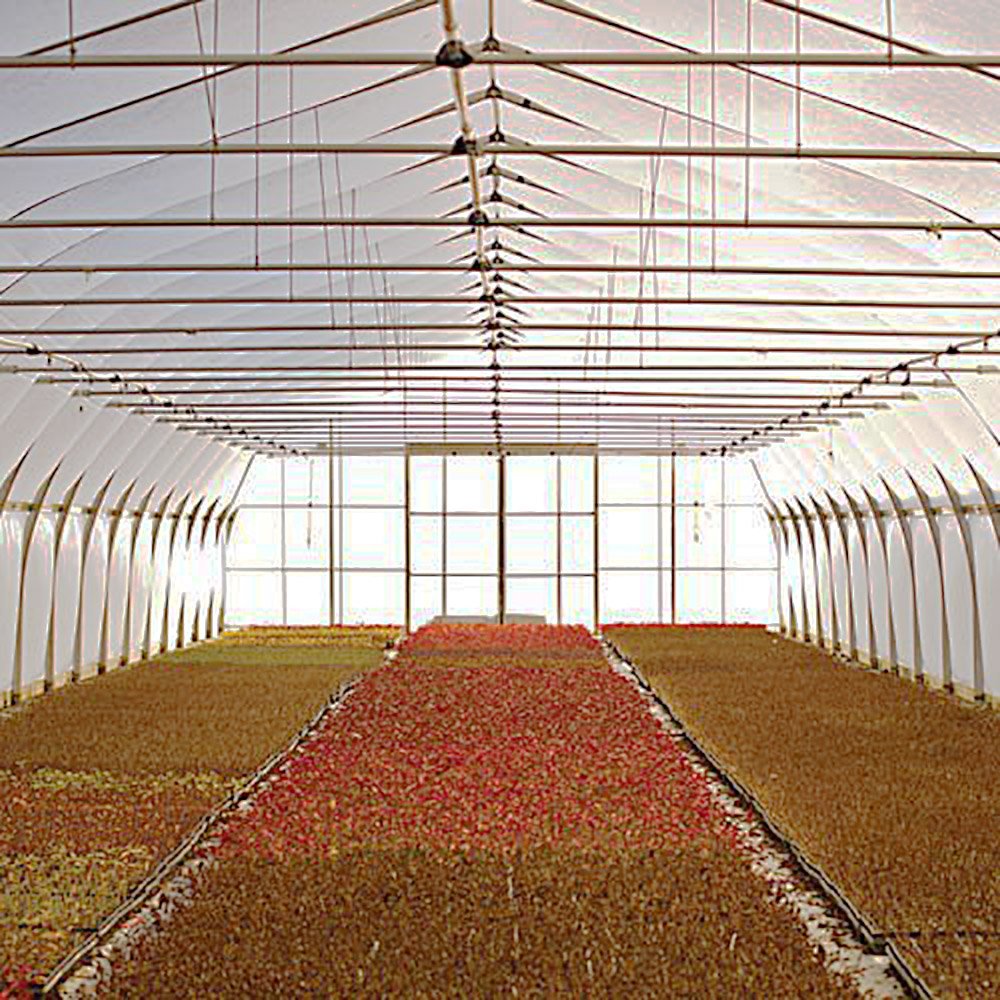Can You Use A Greenhouse In The Winter?

Using a greenhouse does not need to end when the season changes to winter. A lot of people don't know that you can use a greenhouse in the winter. Hoop greenhouses can be used in climates as cold as Maine. Hoop greenhouses can keep the temperature inside of it in the fifties even though the outside is well below freezing. All it takes is a little preparation and knowledge. Using a greenhouse in winter is similar to using it in the summertime, except for a couple of things. Certain crops and plants are more tolerant of colder temperatures. A lot of gardeners like to plant hardy greens like kale, lettuce, spinach, arugula, and endive. A couple of herbs like chives, thyme, or parsley work well in the wintertime. Some root crops are great, too: carrots, beets, onions, leeks, and garlic.
Best Ways To Retain Heat
There are a few ways that can be done to retain heat inside a greenhouse in the winter. The first way is to have two or even three layers of plastic grow film. The trick is to make a thermal barrier between the layers. The thermal barrier is a thin layer of air that is pumped between the layers before it is completely sealed up. This can be done with a simple air pump. The pocket of air acts as a barrier between the cool temperatures outside and the warmer temperatures on the inside. Having this barrier to retain heat can reduce condensation as well. It is recommended to use grow film that is at least 6 Mil thickness. That way it will be more durable during the process of pumping air into it as well as just being more durable against the snow and harsh winter winds.
Another way to retain heat in a hoop house during the winter is by placing a heat sink or thermal mass inside of the structure. This can be done by placing a few water-filled barrels around the inside of the greenhouse. These work by absorbing the sun's heat during the day and then slowly releasing it at night. Using a black or dark-colored barrel is best since it will absorb the most amount of heat during the daytime. Depending on the greenhouse size, a compost pile would work well as a thermal mass too.
Of course, there is another way of retaining heat, and that is by pumping heat indirectly. A space heater is the most efficient way this can be done, but it is not necessarily the easiest to do. It requires running extension cables to the greenhouse and having the added cost of electricity. Be sure to have a the thermometer inside the greenhouse. That way, temperatures can be monitored. Using a space heater may only be necessary for the coldest of days.
Venting
Proper ventilation is key to having a successful greenhouse in the winter. Letting in the fresh air will ensure the health of the plants. Condensation and stagnant air will lead to possible fungal diseases. Regular venting on mild, above-freezing days will reduce the humidity and allow fresh air inside. It's also best to grow the crops on the cool side. That way, it can promote hardy growth. If the temperature is too warm on the inside, the tender growth can be damaged if there is a large drop in temperature. Rolling up the sides of the hoop house and allowing proper ventilation is great if the forecast is going to be warmer than 40℉ (4℃).
Successful Greenhouse In The Winter:
- Plant Hardy Vegetables And Greens
- Use Thermal Barrier Between Grow Film Layers
- Use Thermal Mass Or Heat Sink
- Depending On Location And Climate, Use Heater
- Maintain Proper Ventilation
Using a greenhouse year-round is one of the most satisfying things a gardener can do. It means that there is no off-season, and the joy of growing and harvesting crops is never-ending. With the proper knowledge and preparation, any hoop house or greenhouse can be used in the winter. It may seem like a daunting task, but we are here to help. Call or email our friendly team if you have any questions at all.
Contact Us




